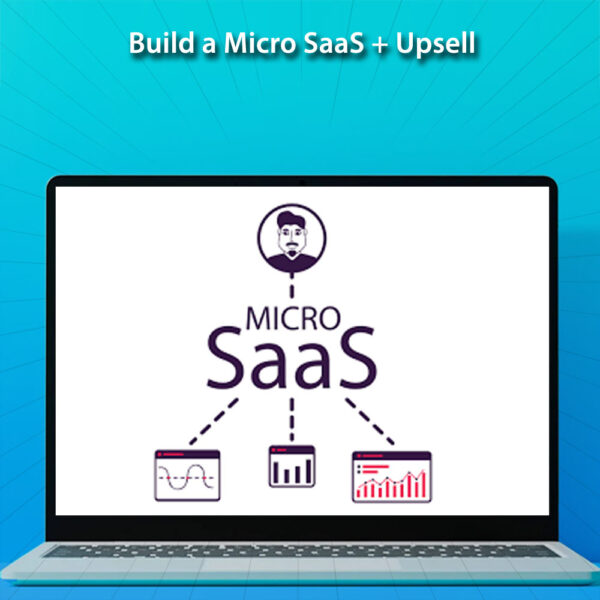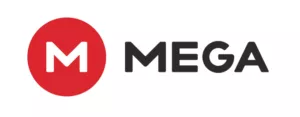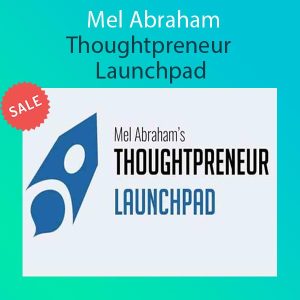Description
Build a Micro SaaS + Upsell
![]()
Building a Micro SaaS + Upsell Strategy
Building a Micro SaaS (Software as a Service) product can be a highly profitable venture, especially when you focus on solving specific niche problems. The term “Micro SaaS” refers to small, lightweight software solutions that address targeted, often niche problems. Combined with a robust upsell strategy, you can maximize revenue from your user base while keeping costs low.
Step 1: Idea Validation and Niche Selection
Before diving into development, you need to select and validate a niche. A good Micro SaaS idea typically:
- Solves a specific pain point for a niche audience.
- Requires minimal ongoing support and maintenance.
- Can be developed quickly with core functionality (a Minimum Viable Product – MVP).
- Has a clear upsell opportunity (premium features, larger usage tiers, additional services).
Idea Validation Steps:
- Identify niche problems: Look into communities like Reddit, Quora, or niche Facebook groups to understand specific problems people face in your target market.
- Competitor analysis: Look at existing solutions, check their features and pricing. Can you do better, or address a smaller, underserved segment?
- Pre-launch survey: Create a landing page or use Google Forms to gather feedback from potential customers on your idea.
- Prototype and feedback: Build a low-fidelity prototype (using wireframes or a no-code tool) and get feedback from early adopters or industry experts.
Example Idea:
- A Micro SaaS for local business SEO tracking, where small businesses can monitor their local SEO performance with simplified tools, including Google My Business, reviews, and keyword rankings.
Step 2: Develop Your Micro SaaS MVP
Once you have validated your idea, the next step is building the MVP. Focus on core functionality—just enough to attract initial users and validate further development.
Tech Stack for MVP:
- Backend: Use a lightweight backend framework like Node.js, Ruby on Rails, or Laravel.
- Frontend: A simple React or Vue.js frontend with a clean UI.
- Cloud Hosting: Use platforms like AWS, Heroku, or DigitalOcean for hosting.
- Database: Choose a flexible database like PostgreSQL or MongoDB.
- Authentication: Implement simple login with services like Auth0 or Firebase for authentication.
- Payment Processing: Use Stripe for easy subscription and payment management.
Start with features that solve the core problem, and ensure the user interface is intuitive and clean.
Key Features for a Micro SaaS MVP:
- Dashboard: Simple, data-driven, real-time information.
- Core Functionality: Whatever solves the main pain point (e.g., SEO tracking, CRM automation, content creation tools).
- User Management: Basic login, profile, and subscription management.
- Analytics: Basic analytics that show users the value they’re getting from your product.
Step 3: Upsell Strategy Development
Your Micro SaaS should have a freemium model or tiered pricing, which allows for effective upselling. The upsell strategy focuses on converting free or lower-tier users into higher-paying customers by providing premium features or enhanced functionality.
Key Upsell Strategies:
- Freemium to Paid Plan:
- Offer a free tier that provides limited but useful functionality.
- Upsell advanced features, such as in-depth analytics, custom reports, or API access.
- Example: Free SEO tracking for 5 keywords; upsell tracking for more keywords and advanced reporting in the premium plan.
- Usage-Based Upsells:
- Scale pricing based on usage limits (e.g., number of users, reports, or projects).
- Example: A project management SaaS where the free version allows 1 project, while higher tiers support multiple projects with additional features like task automation.
- Premium Features:
- Offer advanced features only available in higher-priced plans, such as integrations with third-party tools (Zapier, CRM, email services).
- Example: Custom SEO recommendations and competitor tracking in the paid version of the SEO SaaS.
- Priority Support:
- Offer faster customer support and dedicated account management for higher-tier customers.
- Example: Provide free customers with email-only support and premium customers with live chat or phone support.
- AI-Powered Features:
- Add an AI component as a premium feature that helps automate tasks or provides insights (e.g., content suggestions, auto-scheduling, or predictive analytics).
- Example: AI-driven keyword suggestions for SEO in higher pricing tiers.
- Team/Collaboration Upsell:
- For SaaS tools that cater to teams, you can upsell team-based functionality like shared dashboards, user permissions, or collaboration features.
- Example: For a CRM tool, the basic version allows only one user, while premium tiers enable full team collaboration.
Pricing Structure Example:
- Free Tier: Basic SEO monitoring for up to 5 keywords.
- Tier 1 ($20/month): 25 keywords, advanced reporting, and keyword suggestions.
- Tier 2 ($50/month): 100 keywords, competitor analysis, and Google Analytics integration.
- Tier 3 ($100/month): Unlimited keywords, full suite of SEO tools, AI-driven recommendations, and priority support.
Step 4: Marketing and Customer Acquisition
Organic Marketing:
- SEO: Ensure your Micro SaaS website is well-optimized for SEO with targeted keywords.
- Content Marketing: Build a blog that provides useful information about the problems your software solves. Share case studies and how-to guides.
- Email Marketing: Build an email list by offering free resources or demos in exchange for contact info.
- Social Media: Actively engage in niche communities where your target audience interacts, such as LinkedIn or industry forums.
Paid Marketing:
- Google Ads: Target specific keywords related to the problem your Micro SaaS solves.
- Facebook/Instagram Ads: Create campaigns that demonstrate your solution with direct CTA buttons like “Start Free Trial.”
- Retargeting: Use retargeting ads to bring back users who visited your site but didn’t sign up.
Community Building:
- Build a community around your product with a Facebook group or Slack channel where users can share tips and feedback.
- Offer exclusive content or webinars for premium users.
Step 5: Post-Launch Growth and Continuous Improvement
- Customer Feedback: Regularly survey your customers and adapt the product based on their feedback.
- Feature Updates: Continuously release new features, especially for higher tiers, to keep upselling and retaining customers.
- Referral Program: Offer existing users rewards for bringing in new customers (e.g., discounted months or cash rewards).
Conclusion
Building a successful Micro SaaS requires selecting the right niche, developing an MVP with core functionality, and using a strategic upsell model to maximize revenue. With the right approach, you can create a scalable and profitable product while keeping development costs and complexity relatively low. Start by solving a small, specific problem, and use upsells to grow your revenue and expand your offerings as your customer base grows.













